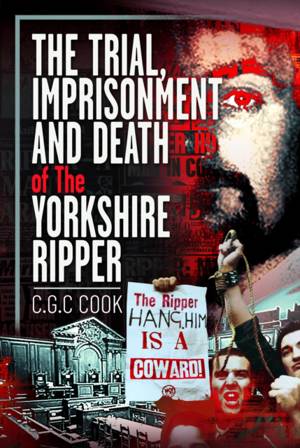
Je cadeautjes zeker op tijd in huis hebben voor de feestdagen? Kom langs in onze winkels en vind het perfecte geschenk!
- Afhalen na 1 uur in een winkel met voorraad
- Gratis thuislevering in België vanaf € 30
- Ruim aanbod met 7 miljoen producten
Je cadeautjes zeker op tijd in huis hebben voor de feestdagen? Kom langs in onze winkels en vind het perfecte geschenk!
- Afhalen na 1 uur in een winkel met voorraad
- Gratis thuislevering in België vanaf € 30
- Ruim aanbod met 7 miljoen producten
Zoeken
€ 30,95
+ 61 punten
Omschrijving
This book concentrates on the aftermath of Peter Sutcliffe's murderous campaign, including the trial, his 'hearing voices' defence, his life in Broadmoor Hospital and prison, the continued police investigation into further crimes he may have committed, and a look at 'Wearside Jack.'
The trial is covered day-by-day, including Sutcliffe's own testimony and that of the doctors he had spoken to who had diagnosed him as mentally unwell. Expert cross-examination by the Attorney General Sir Michael Havers, QC, and Harry Ognall, QC, of these doctors showed that their diagnosis was based solely on what Sutcliffe had told them.
As the trial was drawing to a close, Sir Lawrence Byford, who wrote the most comprehensive report on the Yorkshire Ripper investigation, began gathering evidence as to the overall efficiency of the police inquiry. He could not understand why the investigation had focused so much on the letters and tape that had been sent in purporting to be from the perpetrator.
The man who sent these letters and tape was identified much later as an alcoholic called John Humble. For the first time, we take a look at his life, what made him an alcoholic, and potentially why he sent the tape and letters.
Using Home Office files that the author had released under the FOI Act at the National Archives, this is the true story of what happened to the Yorkshire Ripper after his arrest.
The trial is covered day-by-day, including Sutcliffe's own testimony and that of the doctors he had spoken to who had diagnosed him as mentally unwell. Expert cross-examination by the Attorney General Sir Michael Havers, QC, and Harry Ognall, QC, of these doctors showed that their diagnosis was based solely on what Sutcliffe had told them.
As the trial was drawing to a close, Sir Lawrence Byford, who wrote the most comprehensive report on the Yorkshire Ripper investigation, began gathering evidence as to the overall efficiency of the police inquiry. He could not understand why the investigation had focused so much on the letters and tape that had been sent in purporting to be from the perpetrator.
The man who sent these letters and tape was identified much later as an alcoholic called John Humble. For the first time, we take a look at his life, what made him an alcoholic, and potentially why he sent the tape and letters.
Using Home Office files that the author had released under the FOI Act at the National Archives, this is the true story of what happened to the Yorkshire Ripper after his arrest.
Specificaties
Betrokkenen
- Auteur(s):
- Uitgeverij:
Inhoud
- Aantal bladzijden:
- 224
- Taal:
- Engels
Eigenschappen
- Productcode (EAN):
- 9781036115111
- Verschijningsdatum:
- 30/03/2026
- Uitvoering:
- Hardcover
- Formaat:
- Genaaid
- Afmetingen:
- 159 mm x 235 mm

Alleen bij Standaard Boekhandel
+ 61 punten op je klantenkaart van Standaard Boekhandel
Beoordelingen
We publiceren alleen reviews die voldoen aan de voorwaarden voor reviews. Bekijk onze voorwaarden voor reviews.









